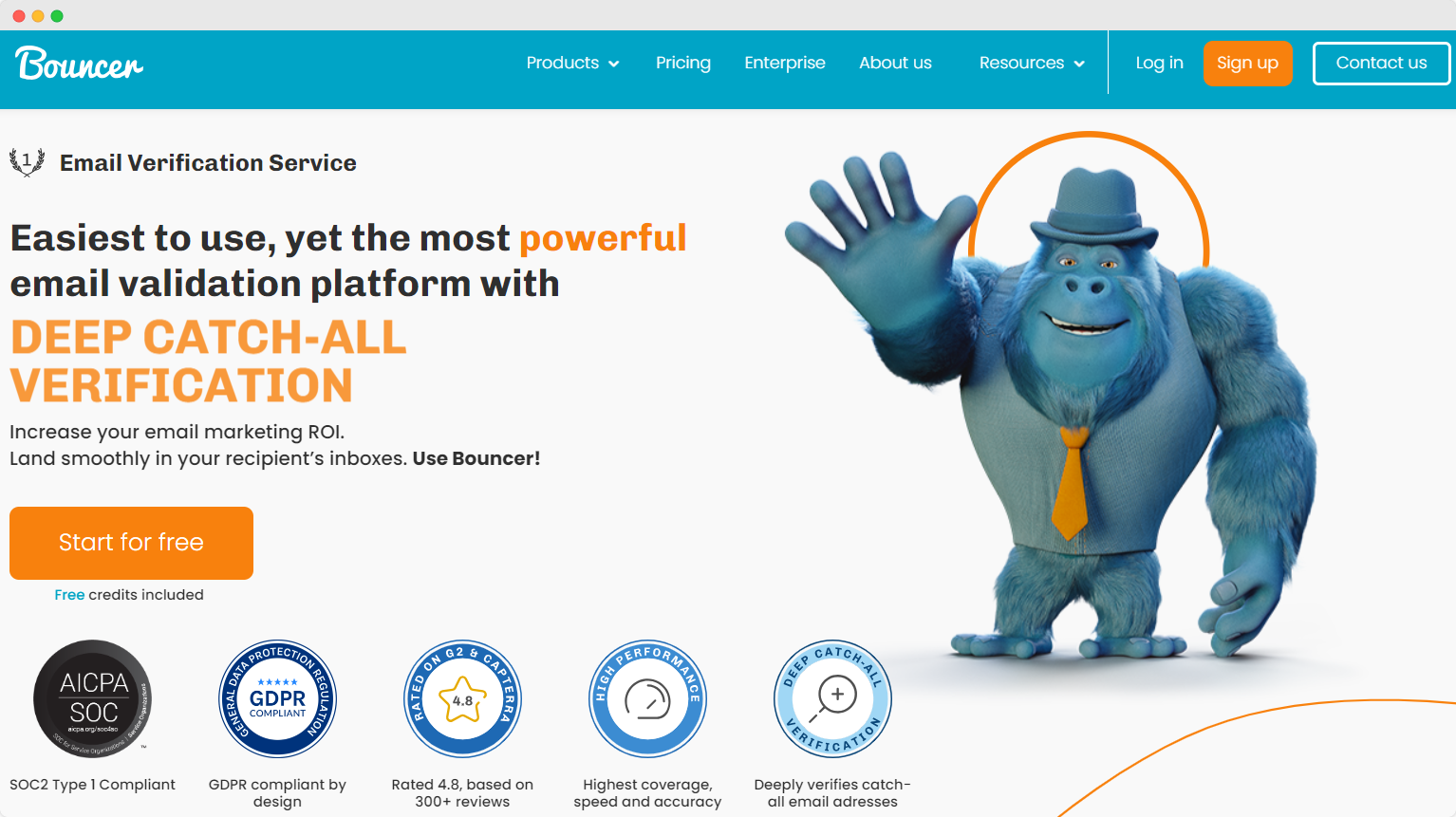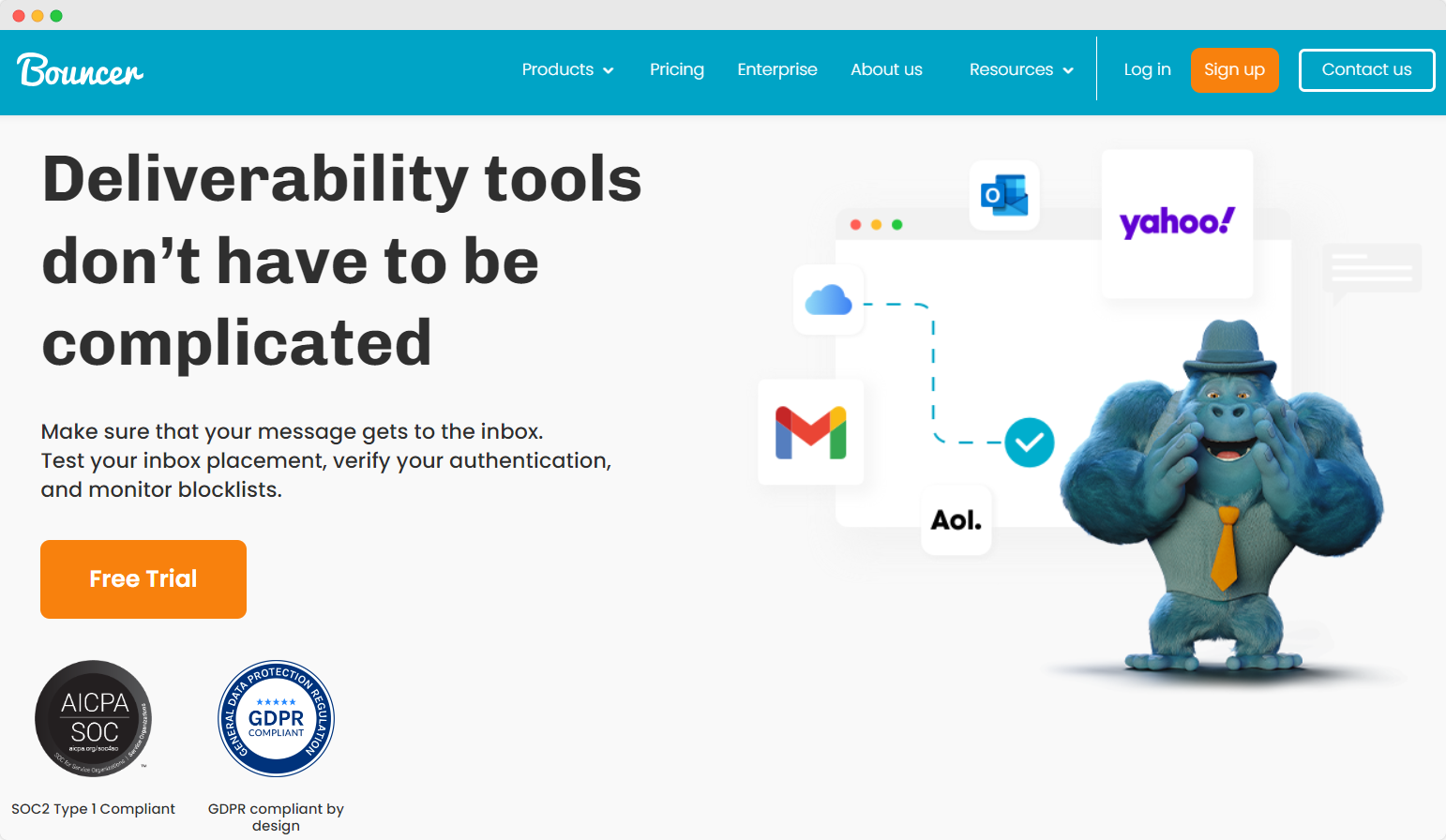Are you tired of sending out emails and wondering why they don’t seem to reach their destination?
Well, you’re not alone.
In email communication, getting your message into your recipient’s inbox can sometimes feel like rolling a die.
But it doesn’t have to be that way.
In this article, we look at what affects email deliverability and how to improve it.
Whether you’re an email marketing pro or just starting, understanding these factors is key to getting better results with your email campaigns.
What is email deliverability?
Imagine you’re sending a bunch of postcards to your friends. Email deliverability is like making sure those postcards reach your friends’ mailboxes and don’t end up lost or in the trash.

So, how does this work with emails?
When you send an email, it travels through the internet and reaches your friend’s email service, like Gmail or Yahoo.
These services are like the neighborhood’s mail carriers. They have rules to decide if your email is good to go into the inbox or if it looks suspicious and should go to the spam folder, which is like a special bin for unwanted mail.
So, in simple terms, email deliverability is all about making sure your emails get to where they’re supposed to go and don’t end up in the no-no pile – the spam folder. It’s about having a good sending reputation and making people excited to see them.
What affects email deliverability?
If you’re struggling to land in the inbox, this means your email deliverability is poor.

Here are the potential causes and how to prevent them.
#1 Email sender reputation
This is like your reputation in the neighborhood. If you’re known for sending great party invites, more will get through. Internet service providers (ISPs) and email service providers keep an eye on this.
They check your IP address (your house in the email world) and domain reputation (like your family name). If they’re good, your emails are more likely to reach the subscriber’s inbox.
Technical explanation:
Your sender reputation is a score assigned to your email sending domain and IP address by ISPs and email service providers. This score is influenced by various factors such as the volume of emails sent, the frequency of spam complaints, the number of bounces, and engagement rates.
A good sender reputation score increases the likelihood of your emails reaching the subscriber’s inbox. ISPs use complex algorithms to evaluate your sending habits and history. Maintaining a positive sender reputation is crucial for deliverability.
#2 Email authentication
This is like showing your ID to prove the party invite is really from you.
Tools like SPF, DKIM, and DMARC tell inbox providers that your email is legit and that you’re not trying to sneak spam into people’s inboxes..
Technical explanation:
Email authentication involves verifying that an email comes from a legitimate source. SPF (Sender Policy Framework) records in DNS allow email servers to verify if the sending server is authorized by the domain’s administrators.
DKIM (DomainKeys Identified Mail) adds a digital signature to each email, which is verified against a public cryptographic key in the domain’s DNS.
DMARC (Domain-based Message Authentication, Reporting, and Conformance) builds on SPF and DKIM as it provides instructions to the receiving server on what to do if neither of those authentication methods passes.
Proper authentication helps prevent spoofing and phishing and improves deliverability.
#3 Email content quality
Your invites need to be top-notch. Avoid looking like spam (you know, those annoying junk emails).
Use good language, and clear subject lines, and avoid shady links.
Technical explanation:
The quality of your email content is scrutinized by sophisticated spam filters employed by ISPs. These filters analyze various elements such as the use of certain trigger words, the text-to-image ratio, HTML structure, and the presence of malicious links.
A well-structured email with clear, concise, and relevant content is more likely to bypass these filters. Additionally, personalized and engaging content can improve your engagement rates, which positively impacts deliverability.
#4 Subscriber engagement
This is about how your friends react to your invites. Do they open them, read them, or ignore them?
If they engage more, like opening and clicking, it tells mailbox providers your emails are interesting and should land in the inbox.
Technical explanation:
ISPs and mailbox providers monitor how recipients interact with your emails. Metrics like open rates, click-through rates, how long an email is read, and whether it’s forwarded or marked as spam, all contribute to your engagement profile.
High engagement is often rewarded with better inbox placement, while low engagement can lead to your emails being filtered as spam or junk.
#5 Email frequency and consistency
It’s how often you send invites. Too many or too few can be annoying.
Find a good balance. Consistency helps too, so people know when to expect your emails.
Technical explanation:
Sending emails at a consistent frequency helps establish a pattern that ISPs can recognize as normal for your sending behavior. Irregular sending patterns or sudden spikes in email volume can trigger spam filters.
It’s important to find a balance in email frequency that keeps your audience engaged without overwhelming them, as this can affect both spam complaint rates and engagement metrics.
#6 Email list management
Keep your guest list updated. Remove those who never come to your parties (inactive subscribers) and always welcome new friends (new subscribers).
Clean lists mean fewer spam complaints and better deliverability.
Technical explanation:
Good list hygiene involves regularly cleaning your email list by removing invalid, inactive, or unengaged subscribers. This reduces bounce rates and spam complaints.
High bounce rates can negatively impact your sender reputation, as they indicate poor list quality or outdated data. ISPs monitor these metrics and may penalize senders with poor list management practices.
Regularly refreshing your list with engaged subscribers can significantly improve your overall deliverability.
Now, some extra tips on email deliverability

Free domain email address
Be careful here. It’s like sending invites on cheap paper – some might not take it seriously. A personal email address or a dedicated IP address can look more professional.
So, instead of acmeinc@gmail.com, try getting contact@acmeinc.com.
Spam complaints and spam traps
If people mark your emails as spam or if you hit spam traps (fake email addresses used to catch spammers), it’s bad news for your sender score.
Unsubscribe link
Always include this. It’s like giving your friends an easy way to say “No thanks” to your party. It’s not only a sign of courtesy but it’s actually illegal not to include these links in emails.
Marketing emails and email campaigns
If you’re an email marketer, make sure your email marketing campaigns are well-planned, relevant, and engaging. This helps with inbox placement and keeps your audience happy.
Why you should care about your email deliverability

Paying attention to your email deliverability is important for various reasons:
Reach your audience effectively
Imagine you’ve got something important to say to your friends, but they’re not hearing you.
That’s like sending emails that never reach the recipient’s inbox. Good email deliverability ensures your message gets across.
When your emails are delivered properly, they land right where you want them – in your audience’s inbox.
This means more people see and read what you’ve sent. And that’s whether it’s a newsletter, a special offer, or a friendly hello.
Maintain a good sender reputation
If you have a good reputation, your emails are more likely to land in the inbox.
ISPs and email services look at your IP addresses and how you handle them.
If you’re using dedicated IP addresses responsibly, it’s like having a good credit score. It shows you’re trustworthy, and your emails are less likely to be marked as spam.
Improve email engagement
You want people to do more than just open your emails – you want them to interact with them.
Good deliverability helps with that.
When your emails consistently reach your subscriber list, people get used to seeing your name in their inbox.
This familiarity can lead to higher engagement rates, as they’re more likely to open your emails, read them, and take action.
Avoid the spam folder
The spam folder is like the Bermuda Triangle of the email world.
Once your email lands there, the chances of it being seen are pretty slim.
Thanks to focusing on deliverability, you can avoid common pitfalls like using misleading subject lines or ending up with invalid email addresses on your list.
This helps keep your emails out of the spam folder and in front of your audience.
Protect your investment
If you’re an email marketer, you’re investing time and resources into your campaigns.
You want a good return on that investment, right?
Keeping your emails successfully delivered boosts the effectiveness of your campaigns.
Use technology to your advantage
Technology like DomainKeys Identified Mail (DKIM) can be a game-changer for your email deliverability.
DKIM is a digital signature that verifies your emails are genuinely from you.
This helps build trust with email services and increases the chances of your emails being delivered successfully.
Build stronger relationships
At the end of the day, email is about connecting with people. Good deliverability means better connections.
When your emails are delivered as intended, you’re more likely to have meaningful interactions with your audience.
This can lead to stronger relationships and a more engaged community.
So, caring about your email deliverability isn’t just about avoiding technical issues. It’s about ensuring your message is heard, building trust, and fostering connections. It’s a vital part of successful email communication, especially for email marketers.
Improve your email deliverability with Bouncer

Are you looking to give your email campaign a real boost?
Meet Bouncer, your go-to tool for getting those emails delivered smoothly.

Think of Bouncer as an essential member of your marketing team, especially when you’re rolling out a big email marketing campaign.
With Bouncer, you can test your inbox placement, verify your authentication, and even monitor blocklists.
So, if you’re tired of seeing your carefully crafted emails go unnoticed, give Bouncer a try.
It’s a straightforward, effective way to improve your email deliverability, keep your sender score high, and make sure your message gets to where it needs to go.
Stay away from the spam folder for good
Email marketing is more than just pressing ‘send.’
You’ve got to think about things like how good your email reputation is and making sure your emails look great.
And hey, don’t forget about Bouncer. Sign up today and validate your first 100 emails for free!


